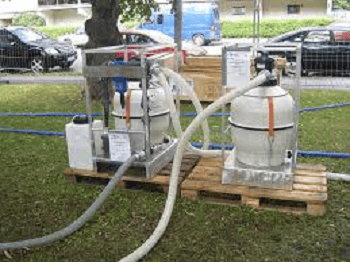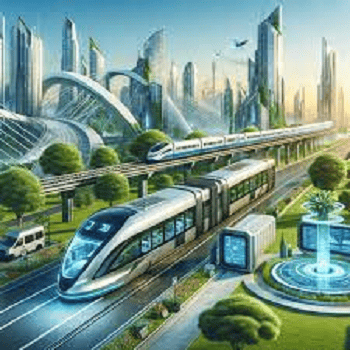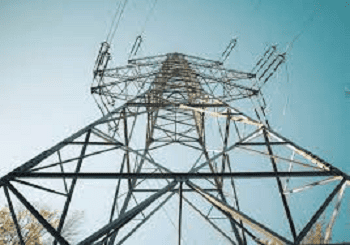Sustainable Technology of 2090
Sustainable Technology of 2090 ? The sustainable technologies of 2090 will likely be shaped by the pressing environmental challenges, advancements in scientific research, and societal shifts toward sustainability. These technologies will focus on reducing resource consumption, minimizing pollution, and ensuring a stable ecosystem for future generations. Here are some potential sustainable technologies that may emerge or become mainstream by 2090: 1. Advanced Renewable Energy Systems 2. Carbon Capture and Utilization (CCU) 3. Circular Economy Technologies 4. Autonomous and Electric Transport 5. Vertical and Urban Farming 6. Water Purification and Desalination 7. AI and Blockchain for Sustainability 8. Smart Buildings and Cities What is Sustainable Technology of 2090 ? Sustainable technology in 2090 will likely be defined by innovations that address the challenges of climate change, resource depletion, and environmental degradation while promoting social and economic equity. These technologies will focus on enhancing efficiency, reducing negative environmental impacts, and supporting long-term ecological balance. Here’s a broad look at the potential characteristics of sustainable technology by 2090: 1. Energy Generation and Storage 2. Carbon Capture and Climate Mitigation 3. Circular Economy and Waste Management 4. Sustainable Agriculture and Food Production 5. Water Purification and Conservation 6. Sustainable Transportation 7. Smart Cities and Sustainable Infrastructure 8. Genetic Engineering for Sustainability 9. AI, Blockchain, and Sustainability When is required Sustainable Technology of 2090 ? The need for sustainable technology is urgent and has already become a global priority. However, to effectively combat the challenges of climate change, resource depletion, and environmental degradation, the required sustainable technologies must be developed, scaled, and implemented within specific timeframes. Here’s when these technologies will likely be required: 1. Immediate to 2030 (Short-Term Action) 2. 2030-2040 (Mid-Term Action) 3. 2040-2050 (Mid-to-Long-Term Action) 4. 2050-2070 (Long-Term Action) 5. 2070-2090 (Long-Term Sustainability and Maintenance) Why These Technologies Are Required Sooner Rather Than Later: In summary, while the required sustainable technologies of 2090 may not be fully realized until the latter half of the 21st century, many of these technologies will need to be developed and deployed in the next few decades to ensure a sustainable future. The critical window for impactful action is between now and 2050. After that, further advancements will be necessary to sustain and enhance the planet’s health and resources. Who is required Sustainable Technology of 2090 ? The Sustainable Technology of 2090 is crucial for a wide range of stakeholders, including governments, industries, individuals, and organizations. Here’s a breakdown of who specifically requires these technologies: 1. Governments and Policy Makers 2. Industries and Corporations 3. Businesses and Entrepreneurs 4. Communities and Individuals 5. Academic Institutions and Research Organizations 6. Global Population (Collective Responsibility) 7. Future Generations Why These Stakeholders Need Sustainable Technologies: In conclusion, Sustainable Technology of 2090 is required by nearly all sectors of society—from governments and industries to communities and future generations. The success of this transition will depend on a collective effort across all levels, driving positive environmental, social, and economic outcomes. Courtesy : Koranos Where is required Sustainable Technology of 2090 ? The Sustainable Technology of 2090 will be required in various geographical locations and environments across the globe to address diverse environmental, social, and economic challenges. These technologies must be deployed in regions most vulnerable to climate change, resource depletion, and environmental degradation, as well as in urban and industrial settings where sustainability will drive future growth. Here’s where these technologies will be required: 1. Regions Vulnerable to Climate Change 2. Urban Areas (Cities and Megacities) 3. Rural and Agricultural Regions 4. Industrial and Manufacturing Regions 5. Global Nature Reserves and Protected Areas 6. Developing Countries and Emerging Economies 7. Global Systems and International Collaboration 8. Remote Areas and Islands Conclusion: The Sustainable Technology of 2090 is required in diverse regions across the globe to address localized challenges and broader global goals. From coastal cities vulnerable to rising seas to rural agricultural regions and industrial centers, sustainable technologies will be essential for building resilience, ensuring long-term prosperity, and safeguarding the planet. Whether through renewable energy, water management, sustainable agriculture, or conservation, these technologies will be critical in shaping a more sustainable futur How is required Sustainable Technology of 2090 ? The Sustainable Technology of 2090 is required to be innovative, scalable, and efficient in addressing the interconnected challenges of climate change, resource depletion, economic inequality, and environmental degradation. These technologies need to be designed and implemented in a way that balances the needs of people, the planet, and profit, ensuring that future generations inherit a sustainable world. Here’s a breakdown of how these technologies will be required: 1. Energy Efficiency and Sustainability 2. Water Sustainability 3. Circular Economy Technologies 4. Agriculture and Food Production 5. Carbon Capture and Climate Mitigation 6. Green Building and Urban Development 7. Biodiversity Conservation and Ecosystem Restoration 8. Transport and Mobility 9. Education and Awareness Conclusion: The Sustainable Technology of 2090 will be required to tackle the biggest challenges faced by humanity. These technologies need to be innovative, adaptable, and globally applicable, while also being scalable and affordable. Their implementation will require a coordinated effort between governments, industries, and communities to ensure a sustainable future for all. The development and integration of these technologies must be carefully managed to avoid negative side effects, ensuring that sustainability benefits both people and the planet. Case study is Sustainable Technology of 2090 ? Case Study: Sustainable Technology of 2090 – The Green Metropolis of 2090 Background: By 2090, the world has faced extreme environmental challenges, including climate change, resource depletion, and mass extinction events. Governments, corporations, and communities have realized that the time for incremental improvements is over. A revolutionary transformation in technology and urban planning was required to not only address the worsening environmental crisis but to enable humanity to thrive in a sustainable way. This case study focuses on the Green Metropolis of 2090, a model city built on principles of circular economy, renewable energy, smart infrastructure, and biotechnological advancements. 1. Energy: A Fully Renewable Grid Technology Used: How It Works: The city runs entirely on renewable
Sustainable Technology of 2090 Read More »








